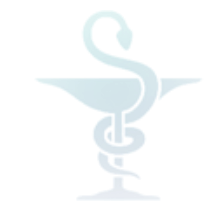





Development and Validation of Spectrophotometric Methods for Simultaneous Estimation of Escitalopram oxalate
and Etizolam in their Combined Tablet Dosage Form
Bhumika D. Sakhreliya*, Dr. Priti D. Trivedi, Darshana K. Modi




Evalution of Antidepressant Activity of Picrorrhiza Kurroa in Mice
P. V. Patani*, Deepti Jani, Dr. A. K. Seth, Dr. M. M. Ghaisas, Nihar Shah




Volume 2, Issue 5
Pages no. 194-253

Design, Development, Evaluation and Optimization of an Extended Release Tablet for Theophylline
Chntan Sinora*, Tejas Ghelani and A.K.Seth




Review on Abortion-Abortifacients to explore Unethical Issues
J.A.Patel* & Dr. T.R.Desai




Evolution of Pharmaceutical Industry: A global Indian & Gujarat perspective
Prof.Viral shah*




A Review on Osmotically Controlled Oral Drug Delivery Systems
Nihar Shah*, Nishith Patel, Dr. Kanubhai R.Patel, Dipen Patel




Formulation and Development pH induced in-situ gelling system of an anti infective drug for sustained
ocular drug delivery
Jayant Madhukar Deshpande 1*, Dr. Paresh B. Shah2





© JPSBR Publications 2011-2024
Powered by Opus
Synthesis and Evaluation of Some Novel Pyrazole Derivatives for Anti-Inflammatory and Antimicrobial Activity
P.V. Patel, S. R. Pattan, V.B. Tambe,R. K. Godge, J. S. Pattan





ABSTRACT:
Three simple, rapid, accurate, precise and cost-effective UV
spectrophotometric methods have been developed
and validated for simultaneous estimation of Escitalopram oxalate and Etizolam in tablet dosage form. The UV
methods have been developed utilizing concept of standard addition utilizing 0.1 N HCl as a solvent. Method I is
estimation using simultaneous equation method at 238.2 nm (λmax of Escitalopram oxalate) and 251.6 nm (λmax of
Etizolam). Method II is Q ratio (absorbance ratio) method utilize absorbance measurement at 238.2 nm and 248.8
nm (isoabsorptive point). Method III is absorbance correction method utilize absorbance measurement at 238.2
nm for Escitalopram oxalate and 292.8 nm for Etizolam. Linearity was observed in range of 10-60 µg/ml and 5-30
µg/mlfor Escitalopram oxalate and Etizolam respectively for all three methods .The correlation coefficient value
was found to be 0.9989-0.9998. All methods were statistically validated as per ICH guidelines and can be
successively applied for analysis for tablets formulation.
KEYWORDS
Escitalopram oxalate, Etizolam, Simultaneous equation method, Q ratio (absorbance ratio) method, Absorbance
correction method
In this research work, Alcoholic extract of
Picrorrhiza kurroa
(PK extract) (15, 30 and 60 mg/kg, i.p.) was
administered once daily for seven successive days to separate groups of young male Swiss albino mice. The
immobility periods of control and treated mice were recorded in forced swim test (FST) and tail suspension test
(TST). Effect of sulpiride (50 mg/kg, i.p.; a selective D
2
receptor antagonist), prazosin (3 mg/kg, i.p.; an α
1
-
adrenoceptor antagonist) and p-chlorophenylalanine (p- CPA, 100 mg/kg, i.p.; an inhibitor of serotonin synthesis) on
antidepressant effect of PK extract in TST was also studied. The antidepressant effect of PK extract was compared
to that of imipramine (10 mg/kg, i.p.) and fluoxetine (20 mg/kg, i.p.) administered for seven successive days. PK
extract produced significant antidepressant effect at a dose of 15, 30 and 60 mg/kg administered for seven
successive days, as indicated by reduction in the immobility times of mice in both FST and TST. PK extract in at a
dose of 15 mg/kg did not show significant effect on locomotor activity of mice. The efficacy of PK extract was
found to be comparable to that of imipramine and fluoxetine. Sulpiride and prazosin significantly attenuated the PK
extract-induced antidepressant effect in TST. On the other hand, p-chlorophenylalanine did not reverse
antidepressant-like effect of PK extract. This suggests that the antidepressant effect of PK extract seems to be
mediated by an increase in brain norepinephrine and dopamine, but not by an increase in serotonin. The results of
the present study indicate the involvement of adrenergic and dopaminergic systems in the antidepressant effect of
alcoholic extract of
Picrorrhiza kurroa
.
KEYWORDS:
Depression, forced swim test, tail suspension test.
ABSTRACT:
Developing oral controlled release tablets for water soluble drugs with constant release rate has always been a
challenge to the pharmaceutical technologist. Most of these water soluble drugs if not formulated properly, may
readily release the drug at a faster rate and produce a toxic concentration of drug on oral administration. Hence it
is a challenging task to formulate a suitable tablet dosage form for prolonged delivery of water soluble drugs.
Theophylline is a bronchodilator agent and commercially available as Elixir, Liquid and Solution which require two
or three times a day dosing. Fast acting dosage forms leads to patient noncompliance and fluctuation in plasma
concentration. To overcome this extended release dosage form is better choice. It is desirable in the therapeutic
and prophylactic treatment of diseases to provide the Theophylline in extended release form. Extended release
dosage forms can increase patient compliance due to reduction in frequency of dosing. They may also reduce the
severity and frequency of side effects as they typically maintain substantially constant plasma levels. Hence the
current research work is carried out to develop pharmaceutical equivalent extended release dosage form in
comparison with innovator product. The most commonly used method of modulating the drug release is to include
it in a matrix system. Diffusion controlled polymeric matrix devices have been widely used as drug delivery systems
owing to their flexibility to obtain a desirable drug release profile, less chance of dose dumping, cost effectiveness
and broad regulatory acceptance. The controlled drug-delivery systems are useful to increase the retention time of
the drug-delivery systems for more than conventional dosage forms.
KEYWORDS
: Theophylline, Bronchodilatation
,
Extended release,
Glyceryl Behenate, HPMC
ABSTRACT:
Birth control has become a major problem in the society, due to the present lifestyle. Generally, emergency
contraceptive pills are used to take care of such problems. In case of failure of such pills, abortifacients are
resorted to. Abortifacients may be (i) Ayurvedic or (ii) Allopathic. In normal course, abortifacients tend to be
effective within 28 – 60 days of conception. If the period of administration of abortifacients increases, they may
not give desired results. In such cases, surgery is the only option available. Various surgical procedures adopted
for termination of pregnancy are Vaccum Aspiration and Dilation; Dilation and Evacuation (D & E); Induction
Abortion, etc. Many unethical issues are found to be associated to it. These issues may cast longstanding and
irreversible effects upon the human health and thereby affect the standards of human life grossly. Therefore, a
detailed study into the techniques adopted for termination of pregnancy is required.
KEY WORDS:
Abortion, Abortifacients, Mifepristone, Misoprostol, self medication
ABSTRACT:
Most of today's major pharmaceutical companies were founded in the late 19th and early 20th centuries. Key discoveries of the 1920s
and 1930s, such as insulin and penicillin, became mass-manufactured and distributed. Global pharmaceutical market is highly dynamic
and is characterized by greater levels of R&D expenditure and extensive regulation of its products. Global pharmaceutical sales are
estimated to be US$ 643 billion in 2006, a growth of 7% over the previous year. All of these changes are ultimately good for the Indian
pharmaceutical industry, which suffered in the past from inadequate regulation and large quantities of spurious drugs. They force the
industry to reach a level necessary for global competitiveness. At the time of independence in 1947, India’s pharmaceutical market was
dominated by Western MNCs that controlled between 80 and 90 percent of the market primarily through importation. Approximately
99 percent of all pharmaceutical products under patent in India at the time were held by foreign companies and domestic Indian drug p
rices were among the highest in the world. According to industry estimates, a great chunk --almost 40 per cent --of machinery used in
the pharmaceutical manufacturing in India is produced in Gujarat. This creates a very good local and global opportunity for Gujarat in
the manufacturing of pharmaceutical machinery, given its strong and well established engineering sector, points out a recent study
titled Gujarat Pharma-Industry-striding into the future, KPMG, India The strong growth prospects of the pharmaceutical exports
segment and growing demand from the domestic market, will further fuel growth in the pharmaceutical machinery sector. However,
Gujarat's engineering sector is highly fragmented, especially the pharma-machinery manufacturing segment. Due to the highly
fragmented nature, there is a dearth of pricing power and critical scale. This in turn restricts the ability to produce the technology-
driven products required for operating in global markets.
KEY WORDS: Global scenario, India Pharma industry, Industry in Gujarat
ABSTRACT:
In the pharmaceutical research and development the novel drug delivery system (NDDS) plays remarkable
performance. A milestone in oral NDDS is innovative and highly versatile drug delivery system. ODDS use the
principle of osmotic pressure, as an energy source, for the delivery of drugs. Oral osmotic drug delivery systems
with their versatile and their highly predictable drug release rates offer various biomedical advantages. Osmosis is
one type of aristocrat phenomenon that seizes the attention for its exploitation in zero-order drug delivery
systems. The drug delivered from these systems is not reliable of pH and the physiological conditions. Optimizing
semipermeable membrane and the osmotic agents can modulate drug release from the system. In this article, a
detailed description of various oral osmotically driven systems along with their formulation aspects, therapeutic
applications and evaluation techniques are described.
KEYWORDS: Drug delivery system, Osmotic pressure, Zero- order release rate, Semipermeable membrane.
ABSTRACT:
Pyrazole and their derivatives are found to have profound biological activity. In the present work some novel substituted Pyrazole
derivatives were synthesized. Pyrazole are synthesized by treating ethyl bis [methyl thio] -2- cyanoacrylate with hydrazide derivatives.
The Derivatives of Pyrazole were prepared by Schiff base reaction. All the synthesized compounds were characterized by IR, 1H-NMR
and Elemental Analysis. All the compounds were evaluated for antimicrobial activity of newly synthesized derivatives was carried out on
different micro-organisms (E.coli, S. aureus, A.niger, C. albicans) at the concentration of 200µcg/mL by using cup-plate agar diffusion
method. The activity was measured in terms of zone of inhibition and compared with standard drug ciprofloxacin for antibacterial and
griseofulvin for antifungal activity. All the compounds were screened for in-vitro anti-inflammatory activity at different concentration
like200 g/ml, and 300 g/ml, by inhibition of protein denaturation method. Ibuprofen was used as standard drug. Some of them
Compounds were screened for the in vivo anti-inflammatory activity at 200 µg/ml concentration. Compound 6b shown the most
promising anti-inflammatory activity
KEY WORDS: Pyrazole; Pyrazole derivatives; Antibacterial and Anti-inflammatory






































































































